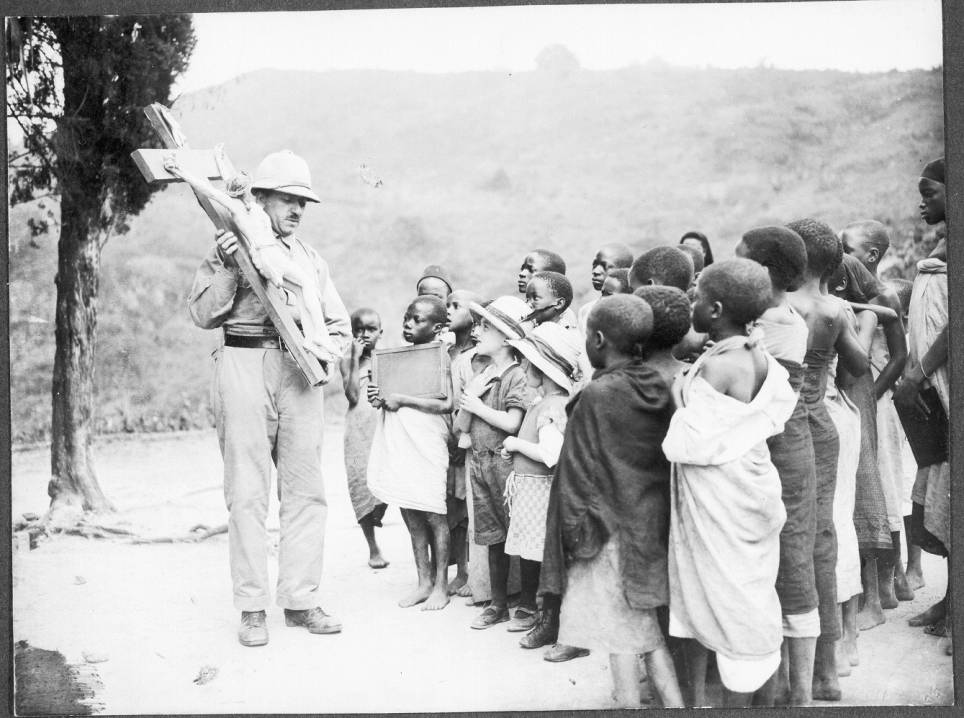Missionary Wilhelm Guth in Tanzania (1927-1933)
Abstract
Following the Berlin Conference on Africa, the German Empire claimed the territory of present-day Tanzania, Burundi, and Rwanda in 1885 and declared it the colony of German East Africa. Economically, the colony was important mainly due to the cultivation of rubber, hemp, cotton, and coffee, although it was ultimately not profitable despite being opened up by railroad lines and telegraph stations. After its defeat in World War I, the German Empire lost German East Africa along with all its other colonies.
This photograph shows missionary Wilhelm Guth (1888-1980), most likely in Gonja in today's Tanzania, with a crucifix donated to the mission by the community of Hohenaltheim. Guth continued his work as missionary after Germany lost the colony.
Source

Source: “ Missionar Wilhelm Guth mit Kruzifix von der Gemeinde Hohenaltheim gestiftet (vorn eigene Kinder.)” Photographer unknown, 1927-33. Archiv des Evangelisch-Lutherischen Missionswerks Leipzig.
Printed in: Thorsten Altena, “Ein Häuflein Christen mitten in der Heidenwelt des dunklen Erdteils.” Zum Selbst- und Fremdverstädnis protestantischer Missionare im kolonialen Afrika 1884-1918, Münster 2003.
© Archiv des Evangelisch-Lutherischen Missionswerks Leipzig